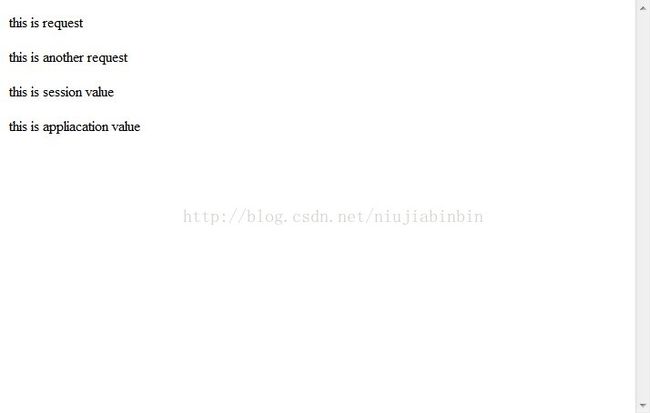java web从零单排第十一期《struts2》action中的Servlet
由于在struts2中采用的是松耦合的方式进行设计,所以在struts2的action类中就可以不使用servlet的API来实现功能,但在控制层action中想要使用Servlet的API时,用该怎样操作呢?
本节介绍如何使用ActionContext类来对request,session,application对象进行操作。
1.创建控制层ShowScopeValue.java
package controller;
import java.util.Map;
import com.opensymphony.xwork2.ActionContext;
public class ShowScopeValue {
public String execute()
{
//第一种方法向request对象中存放数据
Map request = (Map)ActionContext.getContext().get("request");
request.put("requestValue1", "this is request");
//第二种方法向request对象中存数据
ActionContext.getContext().put("requestValue2", "this is another request");
Map session = (Map)ActionContext.getContext().getSession();
session.put("sessionValue", "this is session value");
Map application = (Map)ActionContext.getContext().getApplication();
application.put("applicationValue", "this is appliacation value");
return "showscopevalue";
}
}
由于struts2没有类似于getRequest的方法,所以必须使用Map request = (Map)ActionContext.getContext().get("request");来获取request对象,也可以使用ActionContext.getContext().put("requestValue", "this is another request");来获取request对象。
2.创建showscopevalue.jsp:
<%@ page language="java" import="java.util.*" pageEncoding="ISO-8859-1"%>
<%@ taglib uri="/struts-tags" prefix="s" %>
<!DOCTYPE HTML PUBLIC "-//W3C//DTD HTML 4.01 Transitional//EN">
<html>
<body>
<s:property value="#request.requestValue"1/>
<br>
<br>
<s:property value="#request.requestValue2"/>
<br>
<br>
<s:property value="#session.sessionValue"/>
<br>
<br>
<s:property value="#application.applicationValue"/>
<br>
<br>
</body>
</html>
3.配置文件struts.xml:
<?xml version="1.0" encoding="UTF-8"?>
<!DOCTYPE struts PUBLIC "-//Apache Software Foundation//DTD Struts Configuration 2.0//EN" "http://struts.apache.org/dtd/struts-2.0.dtd">
<struts>
<package name="Maybe" extends="struts-default">
<action name="showscopevalue" class="controller.showScopeValue">
<result name="showscopevalue">
/showscopevalue.jsp
</result>
</action>
</package>
</struts>
4.运行:showscopevalue.jsp
